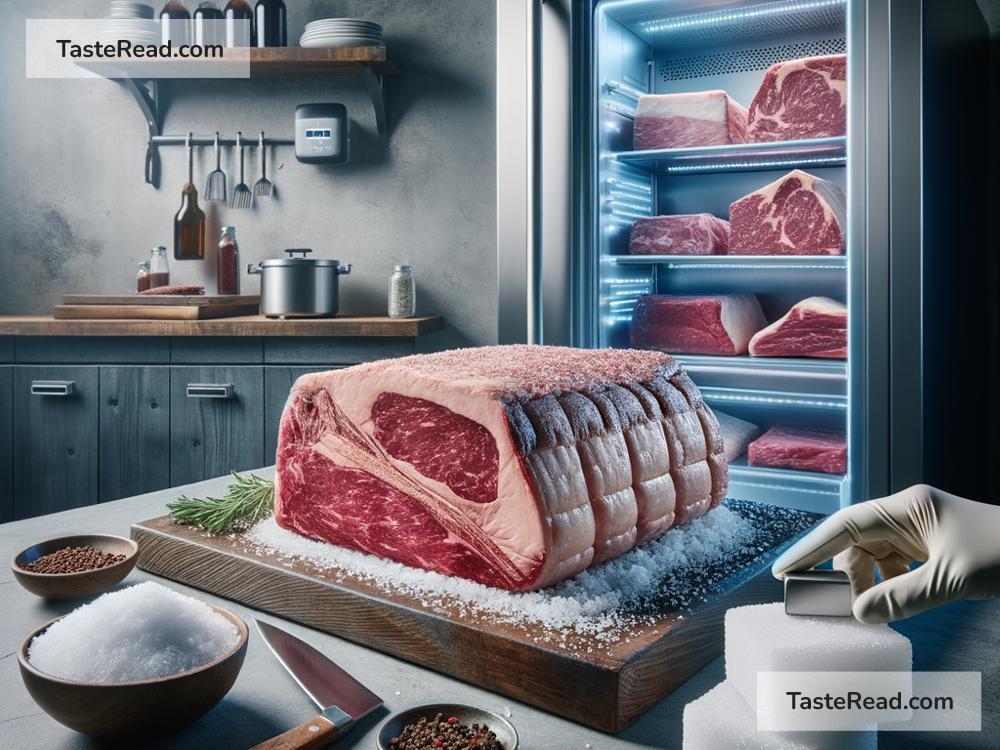How to Dry-Age Meat at Home for Enhanced Flavor
Dry-aging meat might seem like something reserved for high-end butchers and fancy restaurants, but did you know you can achieve those same gourmet flavors right in your own kitchen? Yes, it’s entirely possible, and the rewarding taste of your own dry-aged steak will make you wonder why you haven’t tried this sooner. Let’s break down this seemingly daunting process into easy, approachable steps, allowing you to elevate your home-cooked meals with the rich, concentrated flavors of dry-aged meat.
Why Dry-Age Meat?
First things first, why go through the process of dry-aging meat? The answer lies in the flavor and texture. Dry-aging allows moisture to evaporate from the meat, concentrating its natural flavors. Meanwhile, enzymes break down the muscle tissues, resulting in a more tender and flavorful piece of meat. Imagine a steak that’s not just good, but restaurant-quality fantastic. That’s the magic of dry-aging.
What You’ll Need
Before diving in, let’s ensure you have everything needed:
- A refrigerator (a dedicated fridge is ideal, but you can use your regular one with a bit of space management).
- A wire rack and a tray to catch drips.
- A fan for air circulation (if your fridge doesn’t have good airflow).
- A good-quality chunk of beef. Ribeye or sirloin works great for beginners.
The Dry-Aging Process
1. Choose the Right Meat:
Select a large, high-quality cut of beef. Look for good marbling (fat running through the meat) as this fat will enhance the flavor during the aging process. The piece should be large because you’ll trim away the outer layers before cooking, and starting bigger means more left to enjoy.
2. Prepare Your Fridge:
If you’re using your regular fridge, make sure it’s clean and not overstuffed. Airflow is critical, so having space around your meat is a must. Set the temperature to just above freezing, around 34-38°F (1-3°C). Too warm, and you risk spoilage; too cold, and the meat freezes, halting the aging process.
3. The Setup:
Place the meat on a wire rack over a tray. The tray catches any drips, while the rack ensures air circulates all around the meat. If your fridge has poor airflow, consider a small fan to keep the air moving.
4. Patience is Key:
Now, the waiting game begins. Dry-aging can take anywhere from 7 to even 60 days, though a good starting point for beginners is around 14-21 days. During this time, you’re not just leaving the meat in the fridge; you’re transforming it. The exterior will darken, forming a crust that seals the flavor inside.
5. The Final Prep:
After your meat has aged to your liking, it’s time to trim. Remove the hardened outer layer to reveal the tender, flavor-packed meat beneath. Yes, you’ll be cutting away a decent amount of the crust, but this is all part of the process. What’s left is prime for cooking.
6. Cooking Your Dry-Aged Masterpiece:
Remember, dry-aged meat cooks a bit differently from fresh meat. It’s leaner, with less moisture, so it tends to cook faster. Keep a close eye on it, whether you’re grilling, searing, or roasting. You’re aiming for perfection, after all.
Tips for Success
Monitor Humidity: Try to maintain a humidity level of around 80-85% in your fridge. Too dry, and the meat will harden too quickly; too moist, and you risk mold.
Be Patient: Good things take time. Resist the urge to check on your meat too frequently. Each opening of the fridge introduces new air and potential contaminants.
Safety First: If at any point your meat smells off or shows signs of green mold, it’s better to be safe and discard it. White mold can be normal, but anything that causes concern should be taken seriously.
The Reward
The first time you taste your own dry-aged steak, you’ll understand the allure. That combination of concentrated flavor and tender texture is why chefs and food enthusiasts swear by the process. Yes, it takes time and a bit of effort, but the rewards are undeniable. Dry-aging meat at home transforms a simple meal into a culinary experience, one that you’ve crafted with your own hands. So, why not give your next special occasion or weekend dinner an upgrade with a delicious piece of dry-aged beef? Your taste buds will thank you.


